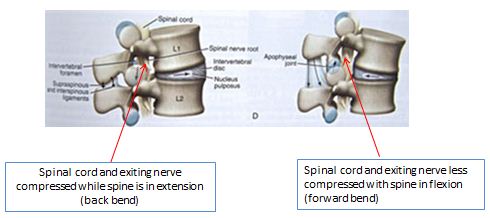Positioning During 2nd stage of Labor: Dorsal Lithotomy vs. Squatting
By: Amanda Blaz DPT | 0 Comments
In this second post of the series comparing positions during 2nd stage of labor, the squatting position will be investigated. There are many advantages to the laboring mother assuming an upright position, mostly due to the assistance of gravity. As discussed in the previous post, the dorsal lithotomy position places the birth canal in an 'uphill' orientation. When in the squatting position, or any upright position for that matter, gravity is aiding the descent of the baby. The squatting position is also advantageous in that it widens the pelvic outlet, requires less bearing down effort, may help bring on the urge to push, and allows the mother freedom to shift her weight to increase comfort. Furthermore, it offers a mechanical advantage as the upper trunk is pushing down on the uterus in this position.
There are pros and cons to every position assumed during second stage and squatting is no exception. In a study conducted by Gardosi et al (1989), it was reported as a difficult position to maintain. Only 49% of women allocated to the upright position test group were able to keep this position during second stage, with 22% managing an upright position during the delivery (only 2 out of 73 managed to squat). Another outcome to consider when looking at the squatting position is perineal trauma. There is contradictory evidence in this category as to whether it is advantageous or not. In a study by Shorten (2002), the squatting position was associated with the least favorable perineal outcomes (intact rate of 42% compared to lateral lying position rate of 66.6%). However, in the previously mentioned study by Gardosi (1989), the adoption of upright positioning resulted in a higher rate of intact perineums.
There are advantages to squatting which have been proven across the board with little dispute in the literature. In a study performed by Golay et al (1993), this position demonstrated a decrease in the duration of 2nd stage, a decreased need for labor stimulation by oxytocin, fewer and less severe perineal lacerations, and fewer episiotomies performed when compared to the semi-recumbent position. Further, there was a trend toward less need for mechanically assisted deliveries when a squatting position was maintained. In another study by DeJong et al (1997), it was found that women who used this position had significantly less pain as well, along with fewer episiotomies and less perineal trauma.
It is important for birth attendants to understand when squatting is either indicated or contraindicated, based on whether or not orthopedic complications are present. This position is not favorable when a woman is experiencing pubic symphysis dysfunction as it requires a large amount of hip abduction which further separates the pubic bones. It should also be avoided when discogenic pain is present as squatting induces lumbar spine flexion - a position of the spine that can exacerbate a disc bulge. Lastly, careful monitoring should take place when women with sacroiliac dysfunction are assuming the squat position as it may place too much compression on the affected joint.
Even though it is a position to avoid in some instances, it can help with easing discomfort due to other orthopedic issues. For instance, if the laboring mother is suffering from coccydynia (pain at the end of the tailbone), squatting can be an excellent choice as the coccyx can move freely when in this position. It is also helpful if a spondylolisthesis is present as lumbar flexion can decrease pain or discomfort due to this condition. Finally, squatting can be assumed with emphasis on maintaining lumbar flexion if the mother has spinal stenosis as it will open up the intervertebral foramen, placing less stress on the nerves exiting the spine.

Although conflicting evidence is present and overall studies are few, it is important to consider the favorable outcomes of alternative 2nd stage positions. Women can have more positive birth experiences when they are aware of non-supine positions and reap the benefits of less pain, shorter duration of 2nd stage, possible decreased perineal trauma, and decreased need for oxytocin and mechanical interventions. I believe that all of these outcomes can have a direct and positive effect on a woman and her child's health and well-being in the postpartum period.
References:
DeJong PR, Johanson RB, Baxen P, Adrians VD, van der Westhuisen S, Jones PW. Randomized triL comparing the upright and supine positions for the second stage of labor. BJOG. 2005;104(5)567-571.
Gardosi J, Sylvester S, and B-Lynch C. Alternative positions in the second stage of labour: a randomized controlled trial. BJOG. 1989;96(11):1290-1296.
Golay, J., Vedam, S., and Sorger, L. (1993). The Squatting Position for the Second Stage of Labor: Effects on Labor and on Maternal and Fetal Well-being. Birth, 20: 73-78.
Shorten A, Donsante J, Shorten B. Birth Position, Accoucher, and Perineal Outcomes: Informing Women about Choices for Vaginal Birth. Birth. 2002;29(1):18-27.
Post by: Amanda Blaz, DPT
Published: March 01, 2011
Tags
Back pain in pregnancyLabor/BirthAmanda BlazDPTSecond Stage PositionsBirth In The Squatting PositionGardosiGolay Et AlPelvic Pain In PregnancyPhysical Therapy After BiPregnancy And Postpartum Physical TherapyWomen's Health Physical Therapy